For the 2025 school year, there are 2 public middle schools serving 393 students in Cloverdale Unified School District. This district's average middle testing ranking is 3/10, which is in the bottom 50% of public middle schools in California.
Public Middle Schools in Cloverdale Unified School District have an average math proficiency score of 20% (versus the California public middle school average of 31%), and reading proficiency score of 26% (versus the 46% statewide average).
Minority enrollment is 67% of the student body (majority Hispanic), which is less than the California public middle school average of 78% (majority Hispanic).
Overview
This School District
This State (CA)
# Schools
5 Schools
3,501 Schools
# Students
1,293 Students
1,854,363 Students
# Teachers
70 Teachers
87,821 Teachers
Student : Teacher Ratio
18:1
18:1
District Rank
Cloverdale Unified School District, which is ranked #1446 of all 1,925 school districts in California (based off of combined math and reading proficiency testing data) for the 2021-2022 school year.
The school district's graduation rate of 90-94% has increased from 85-89% over five school years.
Overall District Rank
#1463 out of 1941 school districts
(Bottom 50%)
(Bottom 50%)
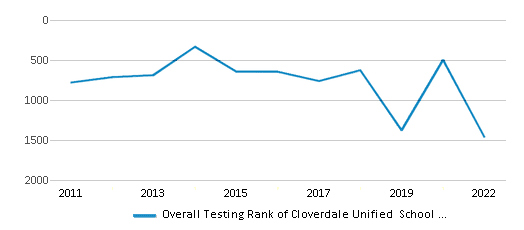
Math Test Scores (% Proficient)
18%
33%
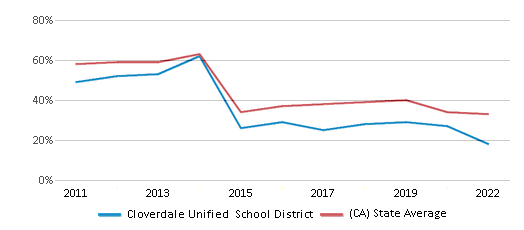
Reading/Language Arts Test Scores (% Proficient)
30%
47%
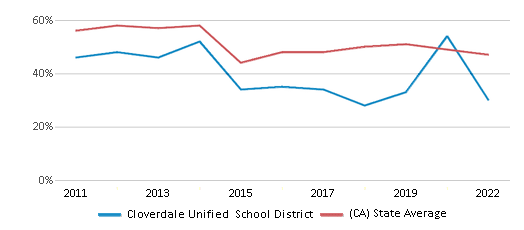
Science Test Scores (% Proficient)
18%
29%
Graduation Rate
90-94%
87%
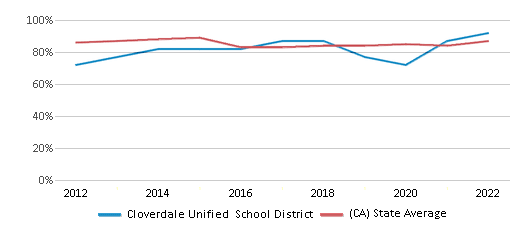
Students by Ethnicity:
Diversity Score
0.54
0.64
# American Indian Students
32 Students
9,887 Students
% American Indian Students
2%
1%
# Asian Students
10 Students
201,760 Students
% Asian Students
1%
11%
# Hispanic Students
787 Students
1,009,980 Students
% Hispanic Students
61%
55%
# Black Students
7 Students
97,908 Students
% Black Students
n/a
5%
# White Students
396 Students
413,325 Students
% White Students
31%
22%
# Hawaiian Students
n/a
7,600 Students
% Hawaiian Students
n/a
n/a
# Two or more races Students
61 Students
109,003 Students
% of Two or more races Students
5%
6%
Students by Grade:
# Students in PK Grade:
-
83
# Students in K Grade:
134
90,358
# Students in 1st Grade:
91
70,728
# Students in 2nd Grade:
89
73,359
# Students in 3rd Grade:
98
73,090
# Students in 4th Grade:
81
76,068
# Students in 5th Grade:
95
82,191
# Students in 6th Grade:
90
289,122
# Students in 7th Grade:
111
439,549
# Students in 8th Grade:
97
441,705
# Students in 9th Grade:
116
59,696
# Students in 10th Grade:
97
51,846
# Students in 11th Grade:
98
51,149
# Students in 12th Grade:
96
55,419
# Ungraded Students:
-
-
District Revenue and Spending
The revenue/student of $17,343 in this school district is less than the state median of $19,974. The school district revenue/student has stayed relatively flat over four school years.
The school district's spending/student of $28,643 is higher than the state median of $18,396. The school district spending/student has stayed relatively flat over four school years.
Total Revenue
$22 MM
$116,387 MM
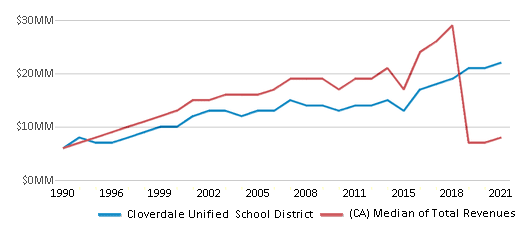
Spending
$37 MM
$107,188 MM
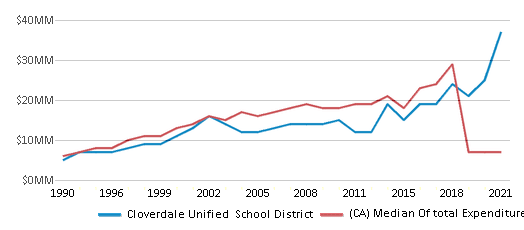
Revenue / Student
$17,343
$19,974
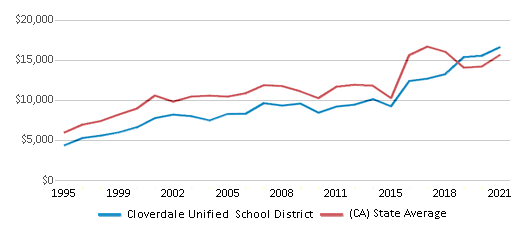
Spending / Student
$28,643
$18,396
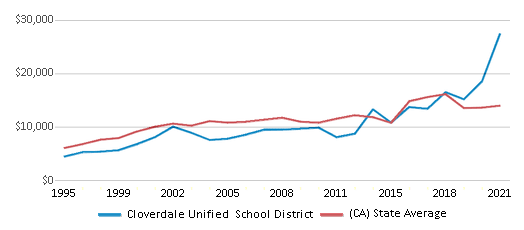
Best Cloverdale Unified School District Public Middle Schools (2025)
School
(Math and Reading Proficiency)
(Math and Reading Proficiency)
Location
Grades
Students
Rank: #11.
Washington
(Math: 20% | Reading: 26%)
Rank:
Rank:
3/
Bottom 50%10
129 South Washington St.
Cloverdale, CA 95425
(707) 894-1940
Cloverdale, CA 95425
(707) 894-1940
Grades: 5-8
| 393 students
Rank: n/an/a
509 North Cloverdale Blvd.
Cloverdale, CA 95425
(707) 894-1900
Cloverdale, CA 95425
(707) 894-1900
Grades: 7-12
| n/a students
Recent Articles

What Is A Charter School?
Explore the world of charter schools in this comprehensive guide. Learn about their history, how they operate, and the pros and cons of this educational innovation. Discover key facts about charter schools, including admission policies, demographics, and funding, as well as what to look for when considering a charter school for your child.

10 Reasons Why High School Sports Benefit Students
Discover the 10 compelling reasons why high school sports are beneficial for students. This comprehensive article explores how athletics enhance academic performance, foster personal growth, and develop crucial life skills. From improved fitness and time management to leadership development and community representation, learn why participating in high school sports can be a game-changer for students' overall success and well-being.

February 05, 2025
Understanding the U.S. Department of Education: Structure, Impact, and EvolutionWe explore how the Department of Education shapes American education, from its cabinet-level leadership to its impact on millions of students, written for general audiences seeking clarity on this vital institution.





